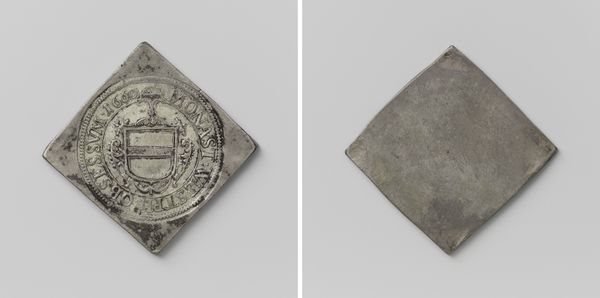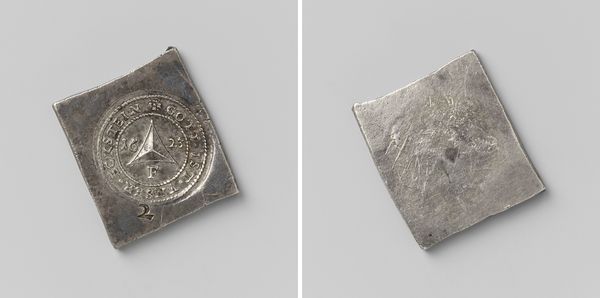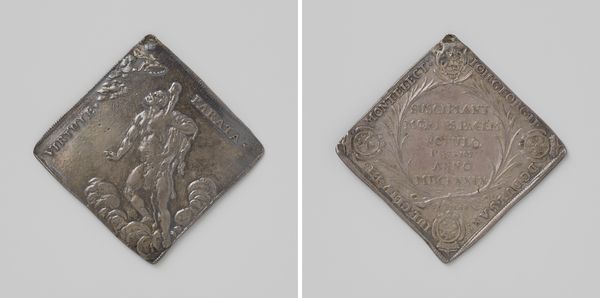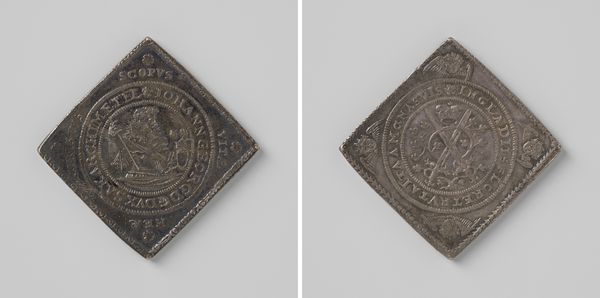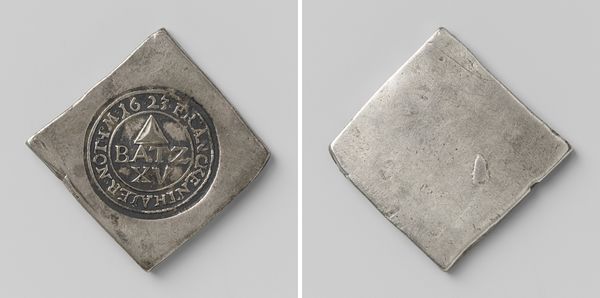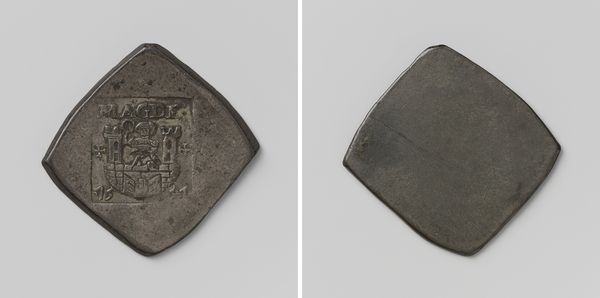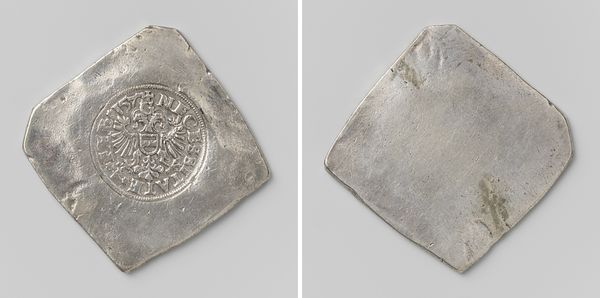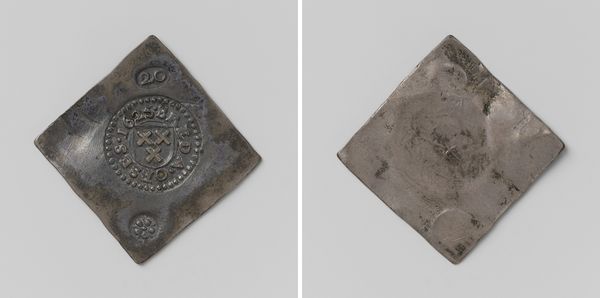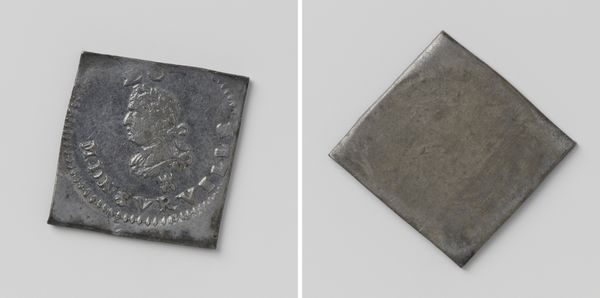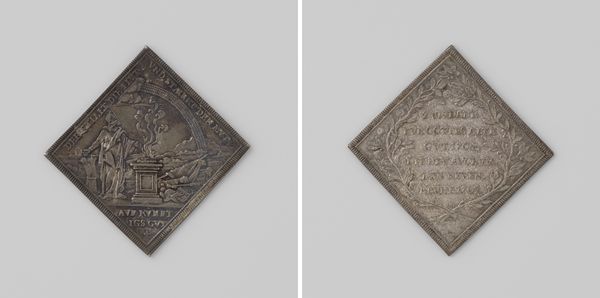
Halve taler, noodmunt uit Muntster, geslagen tijdens het beleg door Christoph Bernard van Galen, ter betaling van de huurlingen die de stad verdedigden 1660
0:00
0:00
print, metal, relief
#
baroque
# print
#
metal
#
relief
#
history-painting
#
coin
Dimensions: height 4 cm, width 4.1 cm, weight 14.36 gr
Copyright: Rijks Museum: Open Domain
Curator: This is a 'Halve taler, noodmunt uit Muntster,' essentially a half-thaler emergency coin from Munster, minted in 1660. It was produced during the siege by Christoph Bernard van Galen, to pay the mercenaries defending the city. Editor: It has an austere quality. The monochrome metal and squared shape certainly diverge from traditional coin aesthetics, and I suppose that reinforces the air of necessity, even desperation, it projects. Curator: Indeed. The unusual square form is a result of its hasty production. The pressure of the siege meant they couldn't adhere to typical minting processes. Look closely at the relief—the central shield, the circular inscription. Notice the details wrought under such duress. Semiotically, the coin speaks to conflict and resilience through these forms. Editor: Considering its history as a means to fund mercenary armies during a siege, doesn't it also speak to the economic engines of warfare and survival? Whose survival was really being prioritized? How were marginalized populations impacted? The metal itself—who extracted it, who fashioned it, who ultimately suffered for its worth? Curator: It's impossible to ignore the circumstances of its creation. The coin embodies Baroque aesthetics, and its imperfections only further its story, providing a window into the monetary landscape of the era. Editor: And who were these mercenaries? Where did they come from, what were their motivations? Perhaps these crude edges speak to a society in chaos, survival reduced to transactional exchanges of violence. We might view the symbolic value inscribed here, the eagle and crest, as less about governance and more a veneer to legitimize the economic demands of battle. Curator: You highlight how social and historical contexts heavily influenced artistic choices of form. Focusing on the design, notice how the central heraldry grounds it. Editor: The materiality betrays it. Those jagged edges—it doesn't feel stable, permanent, powerful. This single artifact encapsulates how power shifts, is always under negotiation, and often won at a brutal cost. Curator: So true. It prompts contemplation on the intricate ties between conflict and finance. Editor: Indeed. An unromantic mirror reflecting back on the brutal machinery of 17th-century survival.
Comments
No comments
Be the first to comment and join the conversation on the ultimate creative platform.
